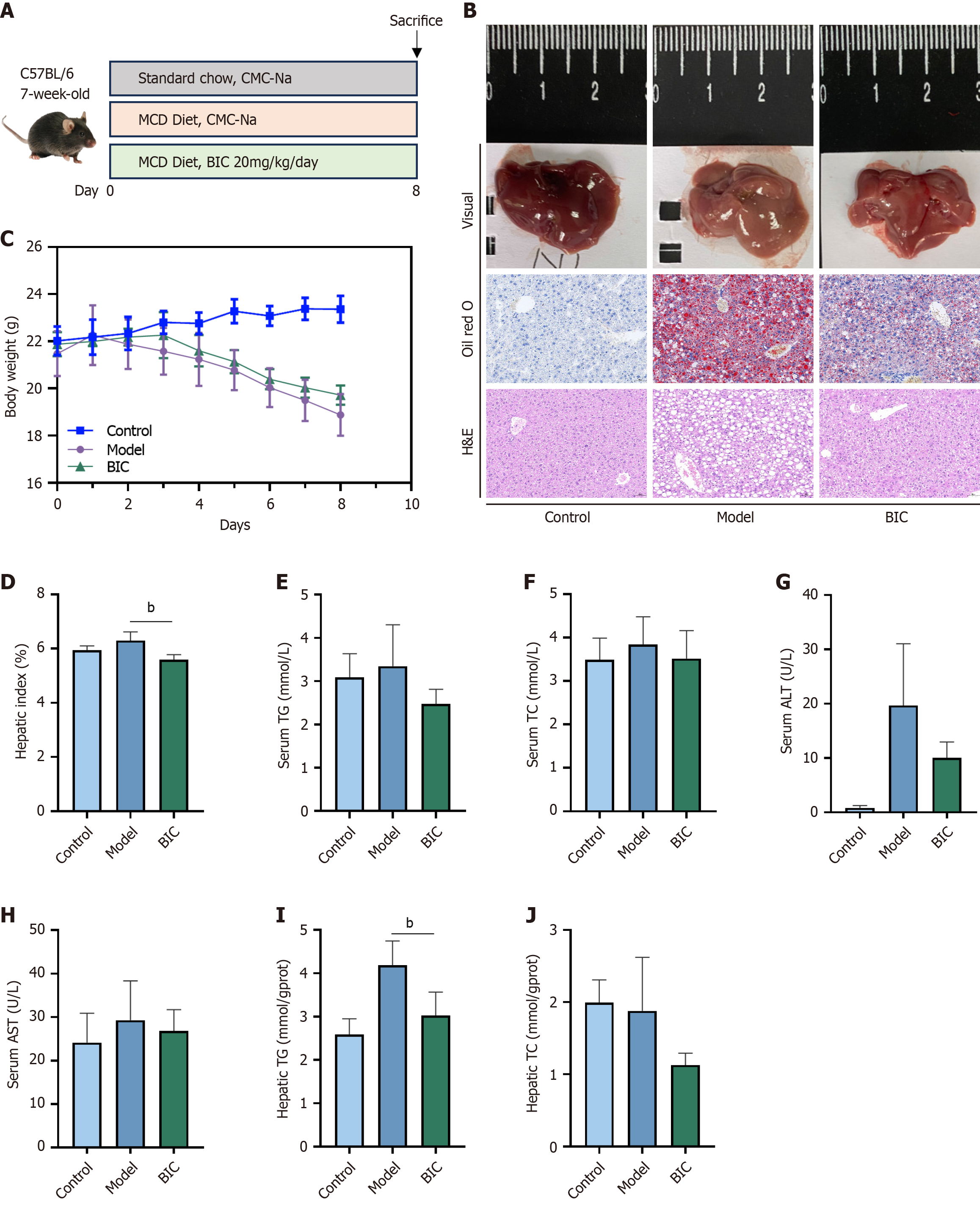Copyright
©The Author(s) 2025.
World J Gastroenterol. May 7, 2025; 31(17): 105438
Published online May 7, 2025. doi: 10.3748/wjg.v31.i17.105438
Published online May 7, 2025. doi: 10.3748/wjg.v31.i17.105438
Figure 6 Bicuculline mitigated liver damage and steatosis in WT mice that were fed a methionine/choline-deficient diet.
A: Experimental diagram of feeding metabolic dysfunction-associated steatotic liver disease model mice that were fed a methionine/choline-deficient diet; B: Representative macroscopic image of mouse liver, representative images of oil red O staining, and representative images of hematoxylin & eosin staining (200 ×); C: Changes in mouse body weight; D: Mouse liver indices; E and F: Serum total triglyceride and cholesterol contents; G and H: Absolute values of alanine aminotransferase and aspartate aminotransferase enzyme activities in the serum; I and J: Relative total triglyceride and cholesterol contents in liver tissues. The results are expressed as the means ± SD (n = 5). Compared with the model group. aP < 0.05; bP < 0.01; H&E: Hematoxylin & eosin; BIC: Bicuculline.
- Citation: Wang XM, Dai Z, Lu DJ, Bao CQ, Yang NB, Zhou YP. Bicuculline ameliorates metabolic dysfunction-associated steatotic liver disease by inhibiting the nuclear factor-kappa B pathway and reducing lipid accumulation. World J Gastroenterol 2025; 31(17): 105438
- URL: https://www.wjgnet.com/1007-9327/full/v31/i17/105438.htm
- DOI: https://dx.doi.org/10.3748/wjg.v31.i17.105438









